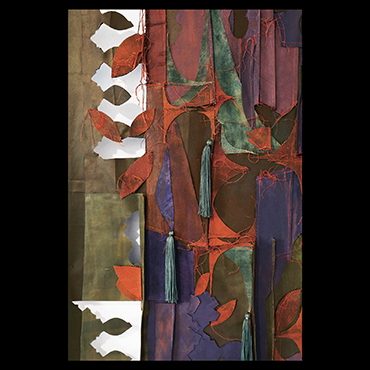هُوَ سَمَّىٰكُمُ ٱلْمُسْلِمِينَ مِن قَبْلُ وَفِى هَـٰذَا لِيَكُونَ ٱلرَّسُولُ شَهِيدًا عَلَيْكُمْ وَتَكُونُوا۟ شُهَدَآءَ عَلَى ٱلنَّاسِ ۚ فَأَقِيمُوا۟ ٱلصَّلَوٰةَ وَءَاتُوا۟ ٱلزَّكَوٰةَ وَٱعْتَصِمُوا۟ بِٱللَّهِ هُوَ مَوْلَىٰكُمْ ۖ فَنِعْمَ ٱلْمَوْلَىٰ وَنِعْمَ ٱلنَّصِيرُ
The Holy Qur’an, chapter Al-Hajj (22:78)
“It is He Who has named you Muslims both before and in this (the Qur’an), and the Messenger may be a witness over you and you be witnesses over mankind! So perform As-Salât, give Zakât and hold fast to Allâh. He is your Maulâ, what an Excellent Maulâ and what an Excellent Helper!”
The corollary of Allah’s majesty is mankind’s humility. Humility lies at the very heart of Islam—the word ‘Islam’ means ‘submission’. In the daily ritual of prayer—whether individual or communal—Muslims express that submission by performing physical prostrations as part of their worship. For those who believe, Allah is their Guardian.
Prayer is a private and silent ritual, yet it is also a collective and communal act. It is shared not only with those standing side-by-side but also with the millions around the world who are praying at that very moment.
Oriented towards Makkah al-Mukarramah, Nour Jaouda’s installation seeks to evoke the symbolic act of prayer. It is formed of three textiles draped to represent the integral postures of prayer—bowing, kneeling and prostration. A heavenwards gaze is reflected in the projecting metal gates of the installation, while the humility, fragility, and imperfections of human existence are symbolized by the three frayed prayer mats.
Hayat Osamah’s work twists different textiles together into a skein. Meshed into a gigantic arch, the sculpture reflects the close-knit spirit and customs of the artist’s densely populated neighborhood in Riyadh, who favor the ubiquitous use of textiles. Simultaneously it symbolizes the connectedness of Muslim communities across the world.
This theme about the significance of community also runs through Nafas, the installation by Saeed Gebaan. He employs golden filaments rising and falling, inhaling and exhaling in harmony—in a collective breath—to celebrate how Muslim worship is an act that transcends the boundaries of language and dialects.

